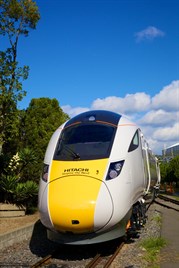 Read the peer reviews for this feature.
Read the peer reviews for this feature.
Download the graphs for this feature.
The growth in passenger numbers and the need to replace rolling stock with unsuitable crashworthiness standards, has led to the delivery of more than 6,000 new vehicles since privatisation. All of these are operated either as electric or diesel-powered units. No new locomotive-hauled coaching stock has been introduced, although this will change when Spain’s CAF builds the proposed new sleeping cars for Scotland’s Caledonian Sleeper.
The structure of these acquisitions has been that the majority of vehicles are specified either by Government agencies or by train operating companies and then purchased from manufacturers by leasing companies, who then hire the trains to the TOCs for operational use.
As public bodies or franchises/concessions granted by Government agencies, European procurement rules require open market tendering throughout the European Union.
The limitations of the UK loading gauge have restricted market entrants and the fleet additions have been concentrated on a limited number of manufacturers. This has resulted in large orders for a relatively few number of vehicle designs.
In most situations, the relatively short contract periods held by the franchised operators has resulted in the rolling stock being considered as a franchise asset, with a future concession holder required to continue the lease. This enables funders to have confidence in the use of the vehicles over a significant part of their design life.
Additionally, a small number of trains have been purchased outright, in particular by Heathrow Express.
A growing trend has been to require manufacturers to organise the maintenance of the rolling stock, with the aim of optimising fleet availability and the associated management of heavy overhauls and provision of spare parts.
In terms of the age profile, all 47% of vehicles in current use have entered service in the post-privatisation period. The remainder was inherited from BR - 13% of the fleet dates from the 1970s, 24% from the 1980s, and 16% from the 1990s.
The three original rolling stock companies established when the new industry structure came into being remain the predominant owners, with Angel Trains having a 34% market share, Porterbrook Leasing 31% and Eversholt Rail 27%.
In evaluating the make-up of rolling stock acquisitions since the break-up of BR, the main elements have been the replacement of Mk 1 rolling stock operated over the former Southern Region third rail electrified network, the replacement of obsolete locomotive-hauled assets and the need to cater for growth. The latter has required rolling stock capacity to be increased on many routes, by the acquisition of new vehicles and by the retention and refurbishment of older equipment.
There has been very little new electrification, apart from the re-opening of lines in Scotland and the commissioning of the first phase of the North West triangle project. However, this is now changing, with the advent of a national programme for installing overhead line catenary.
Traffic growth outside the London area has required enhancement of the DMU fleet, and there has been a substantial build of the Class 170 Turbostar type (by Bombardier at Derby) to provide vehicles for a range of operators.
Porterbrook was closely involved with the development of the fleet, and ordered trains without a defined customer in the belief that the market would find a need for the trains. It is a great shame that there has not been more of this speculative approach - it would have resolved the lack of capacity that is now evident for a number of rolling stock types.











